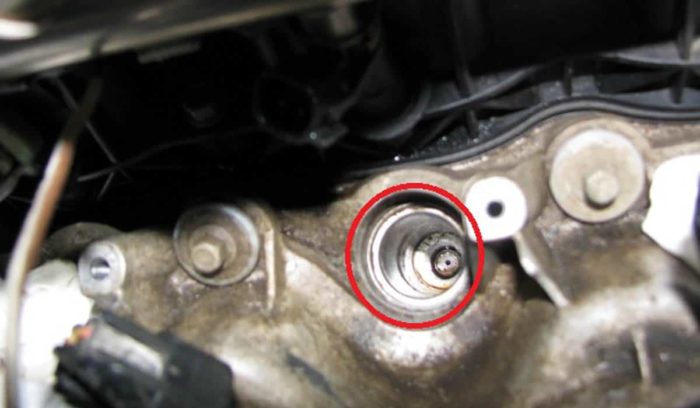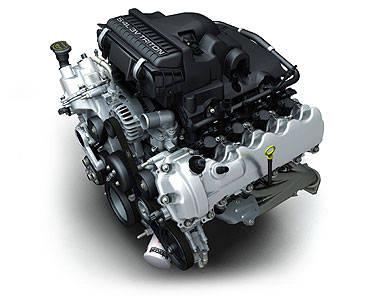The Ford 5.4-liter Triton V8 engine has been a staple in many of America’s favorite vehicles for over two decades. Found in F-150 trucks, Expeditions, and even high-performance Mustangs, this engine has powered millions of vehicles across the United States.
| Problem | Affected Models | Symptoms | Causes | Potential Consequences | Solution/Prevention |
|---|---|---|---|---|---|
| Spark Plug Ejection | 2004-2008 | – Loud pop – Loss of power – Misfires | – Stripped threads – Inadequate torque specs | – Engine damage – Expensive repairs | – Proper torque – Thread repair kits |
| Spark Plug Breaking | 1997-2003 | – Check engine light – Rough running | – Design flaw – Carbon buildup | – Difficult removal – Potential head damage | – Special extraction tools – Professional removal |
| EGR System Failures | All years | – Rough idling – Poor fuel economy – Check engine light | – Clogged EGR valves – Failed sensors | – Increased emissions – Failed inspections | – Regular cleaning – Sensor replacement |
| Oil Leaks | All years, worse in older models | – Oil spots on driveway – Burning smell | – Worn gaskets – Heat and pressure | – Low oil levels – Engine damage | – Replace gaskets – Regular oil changes |
| Timing Chain Problems | 100,000+ miles | – Rattling noise – Misfires – No-start condition | – Stretched chains – Worn tensioners | – Catastrophic engine failure | – Listen for noise – Preemptive replacement |
| Cylinder Head Cracking | 1999-2001 | – Coolant leaks – Overheating | – Casting defects – Heat stress | – Engine failure – Expensive repair | – Check for leaks – Ford recall service |
| Fuel System Problems | All years | – Hard starting – Poor performance | – Failed fuel pumps – Clogged injectors | – No-start condition – Misfires | – Fuel system service – Quality fuel |
| Intake Manifold Coolant Leaks | 1997-2004 | – Coolant in valleys – Overheating | – Cracked plastic crossover | – Engine overheating – Mistaken for head gasket | – Replace with aluminum – Regular checks |
However, despite its widespread use and initial reputation for reliability, the 5.4 Triton has become notorious for several persistent issues. In this comprehensive blog post, we’ll explore these problems, their causes, and what you can do if you own a vehicle with this engine.
The History and Popularity of Ford’s 5.4 Engine
Before we dive into the problems, it’s essential to understand why this engine became so prevalent in the first place. Introduced in 1997, the 5.4-liter Triton V8 was part of Ford’s modular engine family. Its design promised a perfect blend of power, torque, and durability—qualities that resonate deeply with American drivers, particularly truck owners.
- Used in F-150s from 1997 to 2010
- Powered Ford Expeditions and Lincoln Navigators
- High-performance variants in Ford Mustang SVT Cobra R and Ford GT supercar
The engine’s versatility and initial reliability made it a go-to choice for Ford, cementing its place in American automotive history.
Common Ford 5.4 Engine Problems

1. Spark Plug Issues
One of the most infamous problems with the 5.4 Triton is its troublesome spark plugs. There are two distinct issues:
a. Spark Plug Ejection
- Affects 2004-2008 models
- Spark plugs can blow out of the cylinder head
- Causes include stripped threads and inadequate torque specs
- Results in loss of power, misfires, and potential engine damage
b. Spark Plug Breaking
- Common in 1997-2003 models
- Spark plugs can break off in the cylinder head
- Often requires specialized tools for removal
- Can lead to expensive repairs if not handled correctly
2. Exhaust Gas Recirculation (EGR) System Failures
The EGR system is designed to reduce nitrogen oxide emissions, but in the 5.4 Triton, it’s a common point of failure.
- EGR valves often clog or stick
- EGR sensors fail, causing check engine lights
- Symptoms include rough idling and poor fuel economy
- Repairs can be costly, especially if the EGR cooler is involved
3. Oil Leaks
Oil leaks are another prevalent issue, particularly in older 5.4 Triton engines.
- Main areas: valve cover gaskets, oil pan gasket, and rear main seal
- Can be caused by age, heat, and pressure
- Leaks often start small but worsen over time
- Ignoring them can lead to low oil levels and engine damage
4. Timing Chain Problems
The timing chain ensures that the engine’s valves open and close at the right time. In the 5.4 Triton, this critical component can fail.
- Common in engines with over 100,000 miles
- Issues include stretched chains, worn tensioners, and broken guides
- Signs: rattling noise, misfires, and engine codes
- Catastrophic engine damage can occur if the chain breaks
5. Triton Head Issues
Some 5.4 engines, particularly those from 1999-2001, had problems with cylinder head cracking.
- Often between the valve springs
- Caused by casting defects and heat stress
- Results in coolant leaks and potential engine failure
- Ford issued a recall for affected models
6. Fuel System Problems
The 5.4 Triton’s fuel system isn’t immune to issues either.
- Fuel pumps often fail prematurely
- Fuel injectors can clog or leak
- Symptoms: hard starting, poor performance, and misfires
- Higher risk in vehicles that sit unused for long periods
7. Intake Manifold Coolant Leaks
In 1997-2004 models, the plastic intake manifold crossover can crack.
- Causes coolant to leak into engine valleys
- Often mistaken for head gasket failure
- Can lead to overheating if not addressed
- Ford later switched to an aluminum design
What Can Ford 5.4 Engine Owners Do?
Despite these problems, many Americans still love their Ford vehicles. Here’s what you can do:
- Regular Maintenance: Follow Ford’s recommended service schedule religiously.
- Use Quality Parts: When replacements are needed, use OEM or high-quality aftermarket parts.
- Monitor for Symptoms: Be alert for signs like unusual noises, leaks, or check engine lights.
- Address Issues Early: Don’t wait—small problems can become expensive repairs.
- Find a Good Mechanic: A Ford specialist will be familiar with these issues.
- Consider Upgrades: Some problems have improved replacement parts available.
- Know Your Options: In severe cases, a remanufactured engine might be cost-effective.
The Future: Ford’s Move Beyond the 5.4
Recognizing these issues, Ford has since moved on from the 5.4 Triton.
- Introduced more reliable 3.5L EcoBoost engines
- New 5.0L Coyote V8 in later F-150s and Mustangs
- Focus on turbocharged, smaller displacement engines
These changes show Ford’s commitment to learning from past issues and improving reliability.
Conclusion: A Complex Legacy
The Ford 5.4 Triton V8 engine’s story is one of promise, popularity, and problems. Its widespread use in some of America’s most beloved vehicles made its issues all the more impactful. While it provided the power and torque that U.S. drivers craved, its spark plug woes, oil leaks, and other problems have left a lasting mark.
Yet, in true American spirit, many owners have chosen to work through these issues rather than abandon their vehicles. This resilience speaks to the deep connection between Americans and their cars—especially their trucks. The 5.4 Triton’s legacy is a complex one: a reminder that even giants can stumble, but also a testament to the dedication of those who keep their machines running, come what may.
Also Read:
- What is the Check Engine Light and Why is it On?
- What to Do When Your Car Loses Power But the Engine is Still Running
- Common Issues with the GMC 6.2L V8 Engine and How to Fix Them
- The Power and Durability of Chevy Truck Engines
- Common Issues with the GMC 6.2L V8 Engine and How to Fix Them
For current owners, knowledge is power. Understanding these common problems allows you to take proactive steps, potentially saving thousands in repairs. And for those considering a used Ford with this engine, this information lets you make an informed decision, knowing both the risks and the rewards.
The 5.4 Triton’s story also offers lessons for automakers. In an era where trucks and SUVs still reign supreme in the U.S., reliability isn’t just preferred—it’s expected. As Ford moves forward with new engine designs, the 5.4’s history serves as both a cautionary tale and a blueprint for improvement.


[…] Ford 5.4 Engine Problems: A Deep Dive into America’s Workhorse […]
[…] Ford 5.4 Engine Problems: A Deep Dive into America’s Workhorse […]
[…] Ford 5.4 Engine Problems: A Deep Dive into America’s Workhorse […]